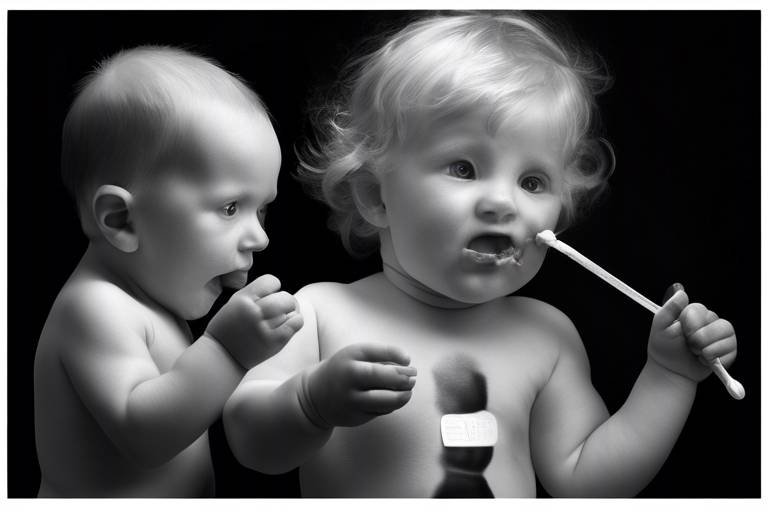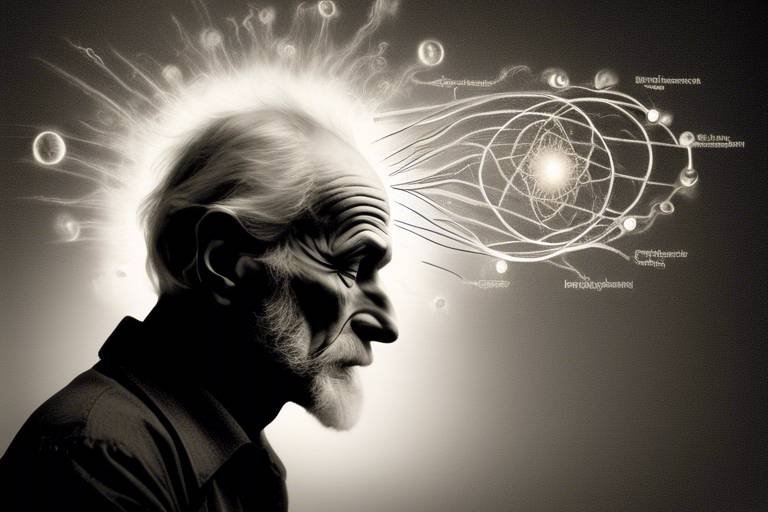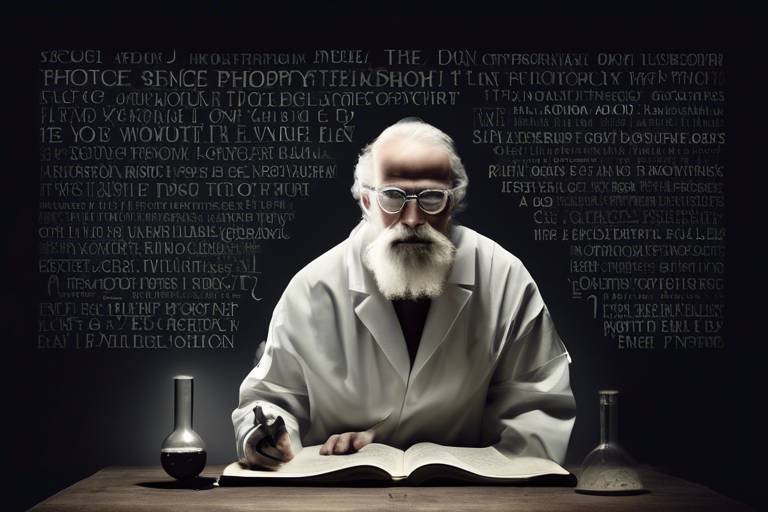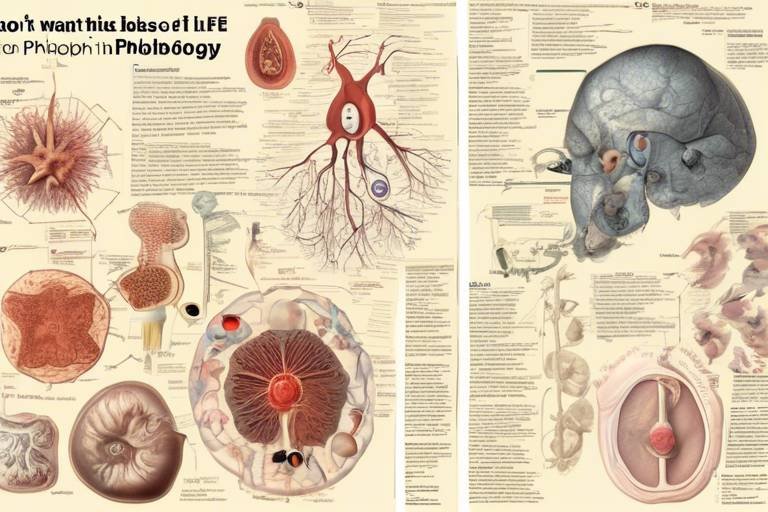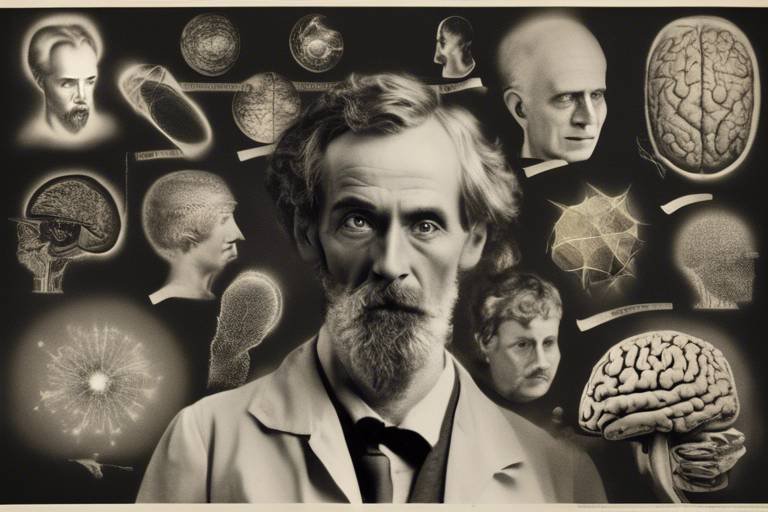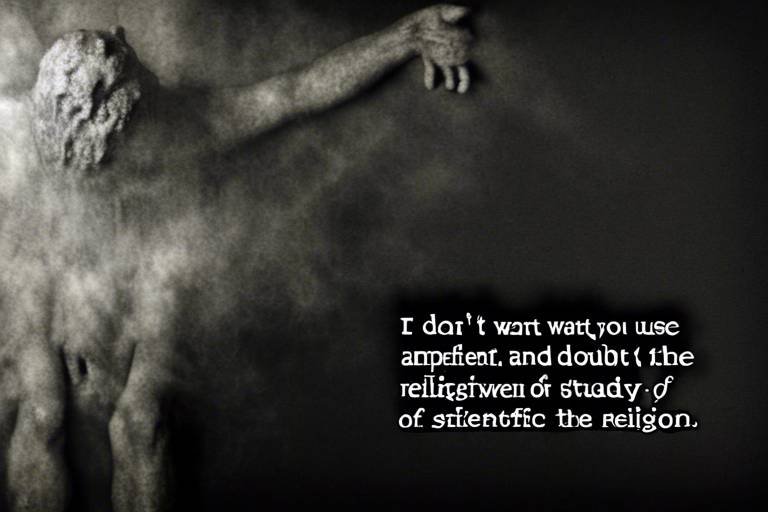Are All Scientific Hypotheses Testable? The Duhem-Quine Thesis
The question of whether all scientific hypotheses are testable is not just a trivial inquiry; it’s a profound philosophical dilemma that has sparked debates among scientists and philosophers alike. The Duhem-Quine thesis serves as a cornerstone in this discussion, challenging our conventional understanding of scientific testing and the nature of hypotheses. At its core, this thesis argues that hypotheses do not exist in isolation; rather, they are intricately woven into a broader tapestry of theories and assumptions. This interconnectedness complicates the straightforward process of testing and validating scientific claims. So, what does this mean for the scientific method? Are we truly able to test hypotheses as we believe we can, or are we merely scratching the surface of a much deeper, more complex reality?
To grasp the implications of the Duhem-Quine thesis, we must first understand what scientific hypotheses are. They are essentially educated guesses or predictions that scientists formulate based on existing knowledge. These hypotheses guide research and experimentation, helping to shape our understanding of the natural world. However, the characteristics of these hypotheses can vary significantly across different scientific fields. For instance, a hypothesis in physics may be formulated differently than one in the social sciences, reflecting the unique challenges and methodologies inherent to each discipline.
The Duhem-Quine thesis posits that when we test a hypothesis, we are not merely evaluating that single statement in a vacuum. Instead, we are engaging with a network of related theories, background assumptions, and even methodological practices. This means that if a test fails, it becomes incredibly difficult to pinpoint the exact cause of the failure. Was it the hypothesis itself that was flawed, or was it an underlying assumption that needs reevaluation? This interdependence raises critical questions about the nature of scientific inquiry and the criteria we use to accept or reject theories. It can feel a bit like trying to untangle a ball of yarn—one wrong pull, and the entire structure may fall apart.
As we delve deeper into this topic, it becomes evident that the implications of the Duhem-Quine thesis extend beyond theoretical discussions. They permeate the very fabric of scientific practice. For example, in fields like physics, researchers often find themselves grappling with the complexities of experimental validation. When a hypothesis leads to unexpected results, scientists must consider a multitude of factors, including the validity of their experimental design and the reliability of their underlying theories. This can lead to a significant rethinking of not just the hypothesis in question, but also the broader theoretical framework in which it resides.
Similarly, in the social sciences, the challenges of hypothesis testing are magnified by the intricate nature of human behavior and societal interactions. Variables are often intertwined, making it difficult to isolate specific causes and effects. The Duhem-Quine thesis highlights these challenges, suggesting that our attempts to validate hypotheses in social contexts are fraught with complications. As researchers strive to make sense of complex social phenomena, they must navigate a web of interrelated factors that can obscure clear conclusions.
In summary, the question of whether all scientific hypotheses are testable is far from straightforward. The Duhem-Quine thesis invites us to reconsider our assumptions about scientific testing and the nature of knowledge itself. It encourages a more holistic view of science, one that acknowledges the interconnectedness of theories and the complexities of empirical validation. As we continue to explore these ideas, we may find that the pursuit of scientific knowledge is as much about understanding the questions we ask as it is about the answers we seek.
- What is the Duhem-Quine thesis?
The Duhem-Quine thesis posits that scientific hypotheses cannot be tested in isolation, as they are part of a web of interconnected theories and assumptions.
- Why is the testability of hypotheses important?
Testability is crucial because it allows scientists to validate or falsify their predictions, which is a fundamental aspect of the scientific method.
- How does the Duhem-Quine thesis affect scientific practice?
This thesis complicates the process of hypothesis testing, as failures in tests may not indicate a flawed hypothesis but rather issues in the broader theoretical framework.
- Can hypotheses in social sciences be tested effectively?
While hypotheses in social sciences can be tested, the interdependence of variables often makes it challenging to isolate specific causes and effects.

The Nature of Scientific Hypotheses
Scientific hypotheses are the backbone of the scientific method, acting as the stepping stones that guide researchers through the labyrinth of inquiry. But what exactly are these hypotheses? At their core, they are testable predictions about the natural world, formulated based on observations and existing knowledge. They serve as the foundation for experimentation, allowing scientists to explore the unknown and validate their theories. However, the characteristics and requirements for these hypotheses can vary significantly across different disciplines, which adds a layer of complexity to the scientific process.
For instance, in the realm of physics, hypotheses often emerge from mathematical models and theoretical frameworks. These hypotheses must be rigorously tested through experiments that can confirm or refute their predictions. On the other hand, in the social sciences, hypotheses may be more fluid, dealing with human behavior and societal trends that are not easily quantifiable. This variability raises an important question: Are all scientific hypotheses equally testable? The answer is not straightforward.
The nature of scientific hypotheses also involves a balancing act. Researchers must consider not only the hypothesis itself but also the broader theoretical landscape in which it exists. This is where the Duhem-Quine thesis comes into play, suggesting that hypotheses cannot be tested in isolation. Instead, they are intertwined with a web of other theories and assumptions, complicating the process of empirical validation. This interconnectedness means that a single experiment may not definitively support or refute a hypothesis; rather, it may only provide insights into a larger framework of understanding.
Moreover, hypotheses can be categorized into different types based on their purpose and the nature of their predictions. Here’s a brief overview:
- Descriptive Hypotheses: These provide a description of a phenomenon and are often used to generate further questions.
- Explanatory Hypotheses: These seek to explain why a phenomenon occurs, often leading to deeper investigation.
- Predictive Hypotheses: These make specific predictions about future events based on current knowledge.
In essence, the nature of scientific hypotheses is multifaceted. They are not just simple statements waiting to be tested; they are complex constructs that play a crucial role in the advancement of scientific knowledge. As we delve deeper into the implications of the Duhem-Quine thesis, it becomes clear that understanding the nature of these hypotheses is essential for grasping the challenges of scientific inquiry.

The Duhem-Quine Thesis Explained
The Duhem-Quine thesis is a fascinating concept that fundamentally challenges our understanding of scientific hypotheses and their testability. At its core, this thesis suggests that scientific hypotheses cannot be tested in isolation; rather, they exist within a complex web of interconnected theories and assumptions. This idea raises significant implications for how we validate and falsify scientific claims. Imagine trying to isolate a single thread in a tapestry—if you pull on one thread, the entire image may shift or unravel, revealing that everything is interlinked.
To further grasp the essence of the Duhem-Quine thesis, it's crucial to recognize how it complicates the process of empirical validation. When scientists conduct experiments, they often rely on a multitude of background assumptions and auxiliary hypotheses. For instance, in a physics experiment, one might assume that the measuring instruments are functioning correctly, the environmental conditions are controlled, and the theoretical framework is sound. If the experiment yields unexpected results, it becomes challenging to pinpoint whether the hypothesis is flawed or if one of the supporting assumptions is at fault. This interconnectedness means that a single failure in validation does not necessarily invalidate the original hypothesis, but rather points to a potential failure in the broader theoretical network.
The implications of this thesis extend beyond mere theoretical discussions; they touch upon the very foundation of scientific inquiry. If hypotheses are not independently testable, then how do we determine their validity? This question leads to a more nuanced understanding of scientific practice, where scientists must consider the entire context of their work. The Duhem-Quine thesis encourages a holistic approach to testing, prompting researchers to evaluate their hypotheses alongside the supporting theories and assumptions.
In light of this, one might wonder: how do scientists navigate this intricate landscape? The answer lies in a collaborative and iterative approach to research. Scientists often engage in discussions, peer reviews, and collective experimentation to refine their hypotheses and theories. This collaborative effort helps to ensure that multiple perspectives are considered, allowing for a more robust evaluation of scientific claims. By acknowledging the interconnectedness of knowledge, scientists can better understand the limitations and strengths of their hypotheses.
Moreover, the Duhem-Quine thesis invites us to reconsider the criteria by which we accept or reject scientific theories. Instead of viewing theories as isolated entities, we should recognize them as part of a dynamic and evolving system of knowledge. This perspective not only enhances our understanding of scientific inquiry but also underscores the importance of flexibility and adaptability in the face of new evidence.
In summary, the Duhem-Quine thesis presents a profound challenge to the traditional views of hypothesis testing in science. By emphasizing the interconnectedness of theories and assumptions, it compels us to adopt a more holistic approach to scientific inquiry. This understanding not only enriches our appreciation of the scientific method but also encourages a more collaborative and reflective practice among researchers.

Historical Context
The Duhem-Quine thesis emerged from a rich tapestry of philosophical thought, particularly during the early 20th century. To truly appreciate its significance, one must delve into the historical context that shaped the ideas of Pierre Duhem and Willard Van Orman Quine. These thinkers were not just isolated intellectuals; they were responding to the broader scientific landscape of their time, which was undergoing rapid transformation due to advancements in various fields.
Pierre Duhem, a French physicist and philosopher, laid the groundwork for the thesis with his profound insights into the nature of scientific testing. He argued that scientific hypotheses do not exist in a vacuum. Instead, they are part of a complex web of theories and assumptions. This holistic view was revolutionary, as it challenged the prevailing notion that hypotheses could be tested in isolation. Duhem's work, particularly in his book La Théorie Physique: Son Objet et Sa Structure, emphasized that when a hypothesis is tested, it is not merely the hypothesis under scrutiny, but rather the entire theoretical framework that must be considered.
On the other side of the Atlantic, Willard Van Orman Quine took these ideas a step further. His paper "Two Dogmas of Empiricism" questioned the very foundations of the analytic-synthetic distinction, suggesting that our understanding of knowledge is interdependent. Quine posited that our beliefs form a web, where changing one belief can affect many others. This radical perspective further complicated the idea of hypothesis testing, as it suggested that empirical validation cannot be straightforwardly applied to isolated hypotheses. Instead, it requires a comprehensive understanding of the interconnected nature of scientific knowledge.
The debates and discussions surrounding these ideas were not isolated incidents; they were part of a larger philosophical movement that sought to understand the nature of scientific inquiry. The interplay between empiricism and rationalism during this period fueled significant debates among philosophers and scientists alike. The implications of the Duhem-Quine thesis resonate through various disciplines, prompting scientists to reconsider how they approach hypothesis testing.
In summary, the historical context of the Duhem-Quine thesis is crucial for understanding its implications. It serves as a reminder that scientific inquiry is not a straightforward path; rather, it is a complex journey influenced by a multitude of factors, theories, and assumptions. This realization challenges us to think critically about how we validate scientific claims and encourages an appreciation for the intricate nature of knowledge itself.
- What is the Duhem-Quine thesis? The Duhem-Quine thesis argues that hypotheses cannot be tested in isolation, as they are part of an interconnected web of theories and assumptions.
- Who were Pierre Duhem and Willard Van Orman Quine? Pierre Duhem was a French physicist and philosopher known for his work on the philosophy of science, while Willard Van Orman Quine was an American philosopher who expanded on Duhem's ideas regarding the interdependence of knowledge.
- What are the implications of the Duhem-Quine thesis for scientific testing? The thesis raises questions about the validity of scientific testing and challenges the criteria by which scientific theories are accepted or rejected.

Pierre Duhem's Contributions
Pierre Duhem, a French physicist and philosopher, made significant strides in understanding the nature of scientific inquiry and hypothesis testing. His work laid the groundwork for what would later be known as the Duhem-Quine thesis. Duhem argued that scientific hypotheses do not exist in a vacuum; rather, they are part of a broader theoretical framework that includes a multitude of assumptions and auxiliary hypotheses. This holistic perspective is crucial because it emphasizes that when scientists conduct experiments to test a hypothesis, they are, in fact, testing not just that single hypothesis but the entire network of theories that support it.
One of Duhem's key contributions was the notion that **empirical testing** is inherently complex. He suggested that a failure to validate a hypothesis does not necessarily imply that the hypothesis itself is false. Instead, it might indicate a flaw in one of the supporting theories or assumptions. This viewpoint challenges the simplistic binary of "true" or "false" often associated with scientific hypotheses, inviting a more nuanced understanding of scientific validation.
Duhem's work also raised important questions about the **criteria for scientific progress**. He posited that science is not merely a collection of individual hypotheses awaiting validation; it is a dynamic and interconnected system. This interconnectedness means that advancements in one area of science can have ripple effects throughout the entire field, complicating the process of hypothesis testing. For instance, if a physicist tests a hypothesis about a particular particle's behavior, the results may also implicate various underlying theories about quantum mechanics, leading to broader implications beyond the initial hypothesis.
In his seminal work, "The Aim and Structure of Physical Theory," Duhem elaborated on these ideas, arguing for a more integrated approach to scientific research. He contended that scientists should not only focus on testing individual hypotheses but also consider how their findings fit within the larger tapestry of scientific knowledge. This perspective encourages researchers to adopt a more collaborative and interdisciplinary approach, recognizing that insights from various fields can enhance our understanding of complex phenomena.
Ultimately, Duhem's contributions underscore the importance of viewing scientific hypotheses as part of an intricate web of knowledge. His ideas continue to resonate in contemporary discussions about the philosophy of science, reminding us that the journey of scientific discovery is often as important as the destination.
- What is the Duhem-Quine thesis? The Duhem-Quine thesis suggests that hypotheses cannot be tested in isolation because they are part of a network of interrelated theories and assumptions.
- Why is Pierre Duhem significant in the philosophy of science? Duhem emphasized the holistic nature of scientific testing, arguing that a hypothesis's validity cannot be determined without considering its supporting theories.
- How does the Duhem-Quine thesis affect scientific testing? It complicates the process of empirical validation, as a failed test may indicate issues with supporting theories rather than the hypothesis alone.

Willard Van Orman Quine's Perspective
Willard Van Orman Quine, a towering figure in 20th-century philosophy, took the foundational ideas of Pierre Duhem and propelled them into a more radical domain. Quine challenged traditional views about the nature of knowledge, particularly the distinction between analytic and synthetic truths. His perspective emphasizes that our understanding of the world is not built upon isolated hypotheses but rather on a complex web of interconnected beliefs and theories. This interdependence suggests that when we test a hypothesis, we are not merely validating that single statement; we are, in fact, testing a broader network of assumptions.
Quine's famous assertion that "our statements about the external world face the tribunal of sense experience not individually but only as a corporate body" encapsulates this idea. Essentially, this means that if a hypothesis fails a test, it does not necessarily imply that the hypothesis itself is wrong. Instead, it raises questions about the entire theoretical framework surrounding it. This perspective complicates the process of scientific validation, as it calls into question the reliability of any given theory when isolated from its context.
To illustrate Quine's viewpoint, consider the following points:
- Holistic Testing: Quine argued that hypotheses are tested in conjunction with various other statements, making it difficult to pinpoint which part of the theory is responsible for a failure in prediction.
- Revisability of Knowledge: He posited that our beliefs are not immutable; rather, they can be revised in light of new evidence, prompting a reevaluation of the entire web of knowledge.
- Interconnectedness of Knowledge: Quine maintained that the boundaries between different fields of knowledge are often blurred, reinforcing the idea that no single hypothesis exists in a vacuum.
Quine's perspective invites us to rethink the very nature of scientific inquiry. Instead of viewing scientific hypotheses as isolated entities waiting to be validated or falsified, we should recognize them as part of a larger, intricate tapestry of knowledge. This realization has profound implications for how we approach scientific testing and the acceptance of theories. It suggests that scientists must be cautious and reflective, considering the broader implications of their findings and the interconnected nature of their theoretical frameworks.
Ultimately, Quine's ideas prompt us to ask: How do we navigate the complexities of scientific testing in a world where knowledge is so deeply intertwined? This question is not merely academic; it has real-world implications for how we conduct research, interpret data, and understand the nature of truth itself.
- What is the Duhem-Quine thesis? The Duhem-Quine thesis posits that hypotheses cannot be tested in isolation, as they are interconnected with other theories and assumptions.
- How does Quine's perspective differ from traditional views? Quine challenges the idea that hypotheses can be validated independently, emphasizing the holistic nature of scientific testing.
- What are the implications of Quine's ideas for scientific research? Quine's perspective suggests that scientists must consider the entire theoretical framework when testing hypotheses, complicating the process of validation.

Implications for Scientific Testing
When we delve into the implications of the Duhem-Quine thesis, we encounter a landscape that challenges our traditional views of scientific testing. The thesis suggests that hypotheses do not exist in a vacuum; instead, they are embedded within a complex web of theories, assumptions, and empirical evidence. This interconnectedness raises significant questions about how we validate or falsify scientific claims. For instance, when an experiment yields results that contradict a hypothesis, how do we know if the hypothesis itself is flawed, or if it’s the underlying assumptions that are at fault?
This idea can be likened to trying to untangle a ball of yarn—pulling on one strand may reveal a knot that affects others, complicating the entire structure. In scientific practice, this means that isolating a single hypothesis for testing becomes a daunting task. Researchers must consider the broader theoretical context, which can lead to a situation where empirical tests are not straightforward and results can be ambiguous.
Moreover, the Duhem-Quine thesis has profound implications for the criteria by which scientific theories are accepted or rejected. It suggests that scientists must be cautious about drawing conclusions based solely on experimental outcomes. For example, if a hypothesis is proven wrong, scientists might still retain the supporting theories by adjusting the assumptions rather than discarding the entire framework. This flexibility can be beneficial, but it also raises concerns about the robustness of scientific knowledge. Are we simply patching up theories instead of developing a clearer understanding of the phenomena we study?
Another critical implication is the challenge of falsifiability. Karl Popper famously argued that for a hypothesis to be scientific, it must be falsifiable. However, the Duhem-Quine thesis complicates this notion. Since hypotheses are part of a larger network, proving one wrong does not necessarily invalidate the entire web of knowledge. This raises the question: How do we determine the reliability of scientific theories when they are so intricately linked?
To illustrate these implications further, consider the following table that summarizes the key challenges posed by the Duhem-Quine thesis:
| Challenge | Description |
|---|---|
| Isolation of Hypotheses | Difficulty in testing a single hypothesis without considering the entire theoretical framework. |
| Falsifiability | Challenges the notion that a hypothesis can be easily falsified when it is part of a larger network of assumptions. |
| Validity of Results | Questions the reliability of experimental outcomes, as results may be influenced by underlying assumptions. |
| Theoretical Flexibility | Allows scientists to retain theories by adjusting assumptions, potentially leading to a lack of clarity in scientific understanding. |
In conclusion, the Duhem-Quine thesis profoundly impacts how we approach scientific testing. It encourages a more holistic view of scientific inquiry, reminding us that our understanding of the universe is often more complex than it appears. As we navigate these complexities, it becomes essential for scientists to remain vigilant and critical of their frameworks, ensuring that they strive for clarity and robustness in their theories.
- What is the Duhem-Quine thesis? The Duhem-Quine thesis posits that hypotheses cannot be tested in isolation; they are part of a network of theories and assumptions.
- Why is the testability of hypotheses important? Testability is crucial because it allows scientists to validate or falsify theories and build reliable knowledge.
- How does the Duhem-Quine thesis affect scientific practice? It complicates the process of hypothesis testing, making it necessary to consider the broader theoretical context.
- What are the implications for scientific theories? The implications include challenges to falsifiability, validity of results, and the flexibility of theoretical frameworks.

Case Studies in Science
Exploring the intricacies of scientific hypotheses through real-world scenarios can provide invaluable insights into the practical implications of the Duhem-Quine thesis. In various scientific fields, the challenges of hypothesis testing become evident, showcasing how interconnected theories complicate the validation process. Let's dive into a few significant case studies that illustrate these complexities.
One notable example comes from the realm of physics. Consider the development of the theory of relativity. When Albert Einstein proposed his revolutionary ideas, he didn't just present isolated hypotheses; he introduced a comprehensive framework that redefined our understanding of space and time. Experimental tests, such as the observation of light bending around massive objects during a solar eclipse, did not simply validate a single hypothesis but rather confirmed a whole set of interrelated theories. This interconnectedness exemplifies the essence of the Duhem-Quine thesis: hypotheses cannot be tested in isolation without considering the broader theoretical context.
In the social sciences, the challenges of hypothesis testing are even more pronounced. Take, for instance, the study of economic behavior. Researchers often formulate hypotheses about consumer spending patterns based on various assumptions, such as income levels, cultural influences, and psychological factors. However, isolating a single variable to test its impact on spending can be incredibly difficult due to the myriad of interconnected factors at play. For example, if a study finds that an increase in advertising leads to higher sales, it might also be influenced by seasonal trends, economic conditions, or even changes in consumer preferences. This complexity makes it hard to draw definitive conclusions, reinforcing the idea that scientific testing is rarely straightforward.
Moreover, the field of medicine offers another compelling case study. When testing new pharmaceuticals, researchers must consider a multitude of variables, including patient demographics, pre-existing conditions, and even placebo effects. A clinical trial may show that a drug is effective for a specific group, but that doesn’t necessarily mean it will work the same way for everyone. The interdependence of these factors complicates the validation of medical hypotheses, aligning with the Duhem-Quine thesis that emphasizes the holistic nature of scientific inquiry.
| Field | Example | Challenges |
|---|---|---|
| Physics | Theory of Relativity | Interconnected theories complicate validation |
| Social Sciences | Consumer Behavior Studies | Difficulty in isolating variables |
| Medicine | Pharmaceutical Trials | Multitude of influencing factors |
These case studies not only highlight the practical implications of the Duhem-Quine thesis but also challenge our understanding of what it means to validate a hypothesis. They remind us that scientific inquiry is a complex tapestry, where each thread is interwoven with others, making it essential to consider the broader context rather than focusing solely on isolated predictions. As we continue to explore the depths of scientific knowledge, the lessons learned from these examples will undoubtedly shape our approach to hypothesis testing in the future.
- What is the Duhem-Quine thesis?
The Duhem-Quine thesis argues that scientific hypotheses cannot be tested in isolation because they are part of a network of interconnected theories and assumptions. - How does the Duhem-Quine thesis affect scientific testing?
This thesis complicates the validation of hypotheses, as it raises questions about the criteria used to accept or reject scientific theories. - Can you provide an example of the Duhem-Quine thesis in action?
Yes, studies in physics, social sciences, and medicine all demonstrate how hypotheses are influenced by a web of related theories and factors, making isolated testing challenging.

Physics and the Duhem-Quine Thesis
When we dive into the world of physics, we quickly realize that it's not just about equations and laws; it's a complex web of interconnected theories. The Duhem-Quine thesis plays a crucial role in understanding how physicists approach hypothesis testing. At first glance, it might seem straightforward—test a hypothesis, gather data, and draw conclusions. However, the reality is far more intricate. In physics, a single hypothesis is rarely tested in isolation; instead, it is part of a larger framework that includes various assumptions and auxiliary hypotheses.
Imagine trying to solve a jigsaw puzzle where all the pieces are interlinked. If you find that one piece doesn’t fit, it’s not just that piece you need to reconsider; you might need to reassess the entire picture. This analogy perfectly illustrates the challenge physicists face when testing hypotheses. For example, consider the theory of gravity. When conducting experiments to test gravitational theories, researchers must also take into account factors like air resistance, the mass of objects, and even the influence of nearby celestial bodies. If an experiment yields unexpected results, physicists might question the initial hypothesis, the experimental setup, or even the foundational theories that underpin their understanding of gravity.
Moreover, the implications of the Duhem-Quine thesis extend beyond individual experiments. It raises significant questions about the validity of scientific theories themselves. For instance, if a hypothesis fails a test, is it the hypothesis that is at fault, or could it be the underlying assumptions that need reevaluation? This interconnectedness means that physicists are often left grappling with the reality that a single failure in testing does not necessarily invalidate a theory. Instead, it challenges them to look deeper into the network of ideas that support their scientific endeavors.
To illustrate this further, let’s consider a few key aspects of how the Duhem-Quine thesis manifests in the realm of physics:
- Experimental Design: Physicists must carefully design experiments that account for multiple variables. This complexity can lead to unforeseen challenges in isolating specific hypotheses.
- Interdisciplinary Connections: Theories in physics often overlap with concepts from other scientific fields, such as chemistry and biology, adding layers of complexity to hypothesis testing.
- Philosophical Implications: The Duhem-Quine thesis invites physicists to reflect on the nature of scientific knowledge and the criteria for theory acceptance, pushing them to think critically about their own methodologies.
In conclusion, the Duhem-Quine thesis profoundly influences how physicists approach hypothesis testing. It serves as a reminder that scientific inquiry is not a linear path but rather a complex journey filled with interdependencies. As physicists navigate this intricate landscape, they must remain vigilant, questioning not just the hypotheses they test but also the broader theoretical frameworks that inform their understanding of the universe.
- What is the Duhem-Quine thesis? The Duhem-Quine thesis posits that hypotheses cannot be tested in isolation, as they are part of a web of interconnected theories and assumptions.
- How does this affect scientific testing in physics? It complicates the process of validation, as failure to confirm a hypothesis may not indicate its falsity but rather issues with the broader theoretical framework.
- Can you give an example of a hypothesis in physics? An example would be Newton's law of universal gravitation, which must consider various factors like mass and distance when tested.

Social Sciences and Hypothesis Testing
The realm of social sciences is a fascinating yet challenging landscape when it comes to hypothesis testing. Unlike the natural sciences, where variables can often be isolated and controlled in a laboratory setting, the social sciences deal with complex human behaviors and societal interactions that are inherently unpredictable. This complexity makes the process of testing hypotheses significantly more intricate. For instance, when researchers formulate a hypothesis about the impact of education on social mobility, they must consider a myriad of factors that could influence the outcome, such as economic background, cultural influences, and even government policies. This interdependence of variables is where the Duhem-Quine thesis shines a light on the challenges faced by social scientists.
One of the primary hurdles in social sciences is the difficulty in establishing clear causal relationships. Unlike in physics, where cause and effect can often be demonstrated through controlled experiments, social phenomena are influenced by countless variables that are often difficult to quantify. For example, a study might aim to test whether increased access to healthcare leads to improved community health outcomes. However, the results might be confounded by other factors such as income levels, education, and even local health policies. This scenario raises an essential question: how can one truly isolate the effect of healthcare access when so many other variables are at play?
To illustrate this further, consider the following table that outlines some common challenges in hypothesis testing within the social sciences:
| Challenge | Description |
|---|---|
| Variable Interdependence | Many social phenomena are influenced by multiple, interconnected variables, making it hard to isolate the effects of a single factor. |
| Complexity of Human Behavior | Human behavior is often unpredictable and influenced by emotions, culture, and social norms, complicating the testing of hypotheses. |
| Ethical Considerations | Conducting experiments on human subjects often raises ethical issues that can limit the scope of hypothesis testing. |
| Data Limitations | Social scientists often rely on observational data, which may not be as rigorous as experimental data, leading to challenges in validation. |
Furthermore, the Duhem-Quine thesis suggests that when a hypothesis is tested and found wanting, it is often not the hypothesis alone that is called into question, but rather the entire web of assumptions and theories surrounding it. This interconnectedness means that researchers must approach their findings with caution, understanding that a failure to validate a hypothesis may reflect broader theoretical issues rather than a flaw in the hypothesis itself.
In conclusion, hypothesis testing in the social sciences is a complex dance of variables, ethical considerations, and theoretical frameworks. The Duhem-Quine thesis serves as a reminder that when we seek to understand human behavior and societal trends, we must embrace the complexity and interdependence of the factors at play. As social scientists continue to navigate these challenges, their work remains crucial in shaping policies and interventions that can lead to meaningful change in society.
- What is a hypothesis in social science? A hypothesis in social science is a testable statement that predicts a relationship between variables, often based on existing theories or observations.
- Why is hypothesis testing more challenging in social sciences? It is more challenging due to the complexity of human behavior, the interdependence of variables, and ethical considerations that limit experimental designs.
- How does the Duhem-Quine thesis apply to social sciences? The Duhem-Quine thesis highlights that hypotheses cannot be tested in isolation; they are part of a broader network of theories and assumptions, complicating the validation process.
- Can hypotheses in social sciences be proven true? While hypotheses can be supported by evidence, they cannot be definitively proven true due to the complexities and variables involved in human behavior.
Frequently Asked Questions
- What is a scientific hypothesis?
A scientific hypothesis is a proposed explanation for a phenomenon, which can be tested through experiments and observations. It serves as a starting point for further investigation and helps guide research in various scientific fields.
- What does the Duhem-Quine thesis propose?
The Duhem-Quine thesis suggests that scientific hypotheses cannot be tested in isolation. Instead, they are intertwined with other theories and assumptions, making it challenging to validate or falsify a single hypothesis without considering the broader theoretical context.
- How does the Duhem-Quine thesis affect scientific testing?
The implications of the Duhem-Quine thesis are significant. It raises questions about the validity of scientific testing, as it suggests that when a hypothesis fails, it may not be the hypothesis itself that is incorrect, but rather the underlying assumptions or other related theories.
- Can you give an example of the Duhem-Quine thesis in action?
Sure! In physics, when experiments yield results that contradict a hypothesis, scientists must consider whether the issue lies with the hypothesis, the experimental setup, or even the theoretical framework supporting the hypothesis. This interconnectedness complicates the process of drawing clear conclusions.
- What historical figures contributed to the Duhem-Quine thesis?
The Duhem-Quine thesis is named after Pierre Duhem and Willard Van Orman Quine. Duhem emphasized the holistic nature of scientific testing, while Quine expanded on this idea, arguing that all knowledge is interconnected, challenging the separation of analytic and synthetic truths.
- Why is hypothesis testing difficult in the social sciences?
In the social sciences, hypothesis testing is particularly challenging due to the complexity of social phenomena. Variables are often interrelated, making it hard to isolate specific factors and establish clear causal relationships, a dilemma highlighted by the Duhem-Quine thesis.
- What are the key takeaways from the Duhem-Quine thesis?
The key takeaways include the understanding that scientific hypotheses are not isolated entities but part of a broader web of theories. This interconnectedness complicates empirical validation and challenges how scientists accept or reject theories based on experimental results.







